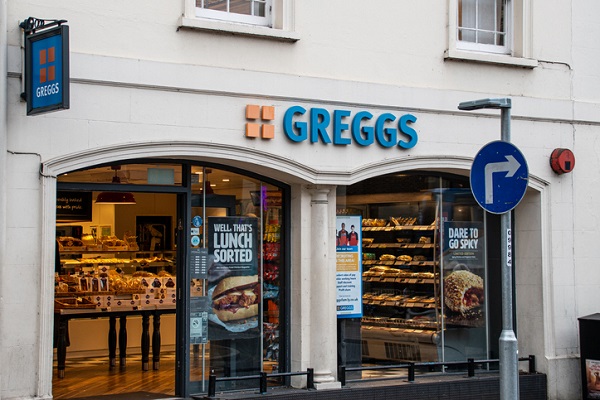ii view: high costs overshadow Greggs sales recovery
16th May 2022 11:21
by Keith Bowman from interactive investor
Shares for this value food-on-the-go chain are down over a third in 2022. We assess prospects.

Trading update for 19 weeks to 14 May
- Like-for-like sales up 27.4% year-over-year
- Total sales of £495 million, up from £378 million
ii round-up:
High street baker Greggs (LSE:GRG) today flagged a good start to 2022 but again cautioned regarding rising cost pressures and a more uncertain economic outlook for consumers.
Like-for-like sales rose 27.4% year-over-year as trading contrasted with the heavily pandemic hit first quarter of 2021. Trading overall remained in line with management’s current full-year expectations.
Greggs shares retreated by around 1% in UK trading, leaving them down by over a third year-to-date. Fellow specialist retailers Halfords (LSE:HFD) and Pets at Home Group (LSE:PETS) are down by similar amounts, while supermarket operator Sainsbury (J) (LSE:SBRY) is down almost 14%. The FTSE 250 index is off over 15% during 2022.
- Recessions are becoming more likely – here’s how to invest
- 60 reasons to sell your UK shares
- How to invest for difficult times
Greggs' like-for-like sales over the most recent 10 weeks to 14 May, when lockdowns in 2021 were easing, rose 15.8%. Greggs expects trading to continue to normalise as it begins to compare with more robust trading periods in 2021 as Covid restrictions eased.
Sales within larger cities and office locations currently lag other outlets, although sales at transport locations had seen a marked increase in activity over recent weeks.
A net 43 new shops were opened during the period, giving a total of 2,224 shops now trading.
First half results are scheduled for 2 August.
ii view:
The Newcastle headquartered company began a transformation from bakery to food-on-the-go retailer back in 2013. Today, its products are predominantly made in centralised bakeries. Its outlets are located from high streets to industrial parks. Digital technology is central in its strategy, with a reward offer, click and collect, and home delivery service.
For investors, rising cost pressures are a core concern. From food costs to energy, the war in Ukraine has added to already elevated prices. Previous challenges from the pandemic have also now been replaced by uncertainty around the economic outlook and the impact this could have on the propensity for its customers to spend money at its outlets.
On the upside, a recovery in trading from the Covid crisis continues to be seen. The opening of new stores is ongoing, while its value proposition at a time of economic turbulence and uncertainty may well leave it more favoured by cost conscious consumers. For now, and with the consensus analyst estimate of fair value per share sat at over £30 per share, room for longer term optimism appears to persist.
Positives:
- Value product offering
- Opening new stores
Negatives:
- Rising cost headwinds
- Economic outlook uncertainty
The average rating of stock market analysts:
Buy
These articles are provided for information purposes only. Occasionally, an opinion about whether to buy or sell a specific investment may be provided by third parties. The content is not intended to be a personal recommendation to buy or sell any financial instrument or product, or to adopt any investment strategy as it is not provided based on an assessment of your investing knowledge and experience, your financial situation or your investment objectives. The value of your investments, and the income derived from them, may go down as well as up. You may not get back all the money that you invest. The investments referred to in this article may not be suitable for all investors, and if in doubt, an investor should seek advice from a qualified investment adviser.
Full performance can be found on the company or index summary page on the interactive investor website. Simply click on the company's or index name highlighted in the article.